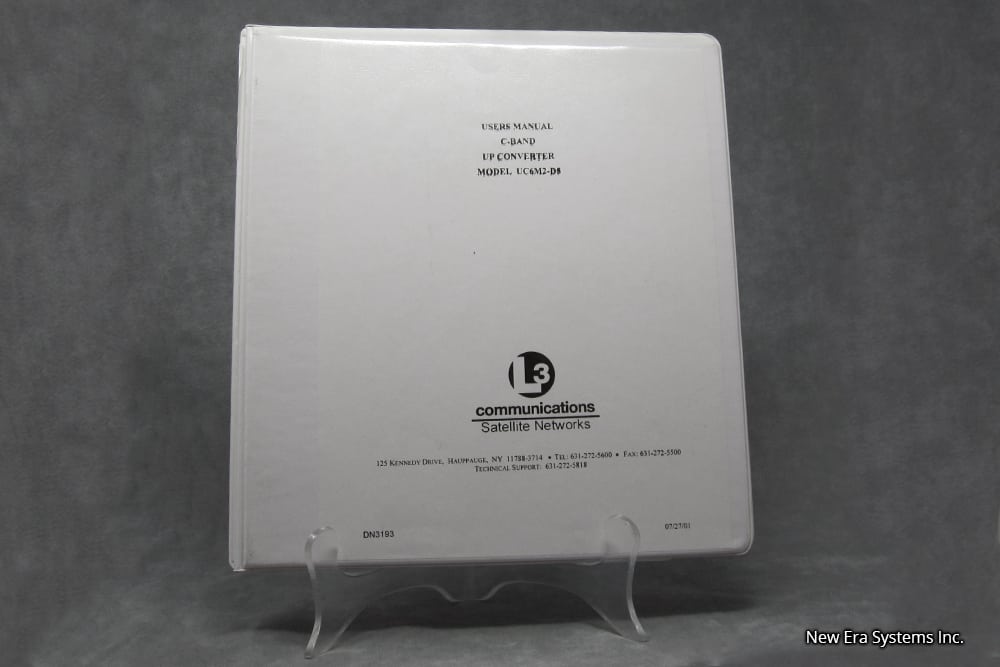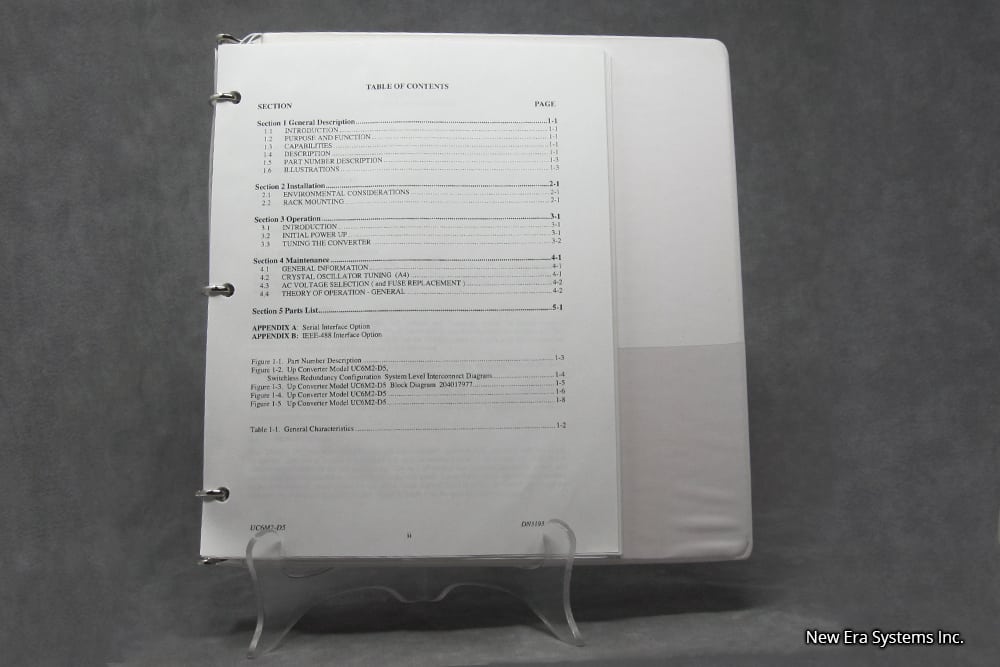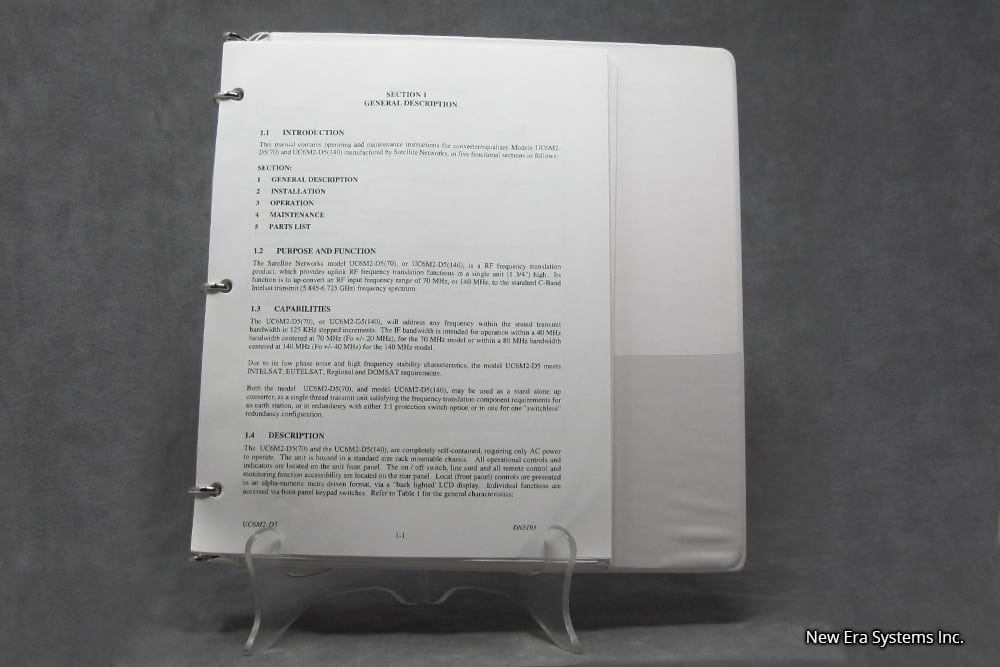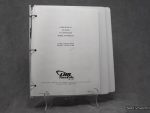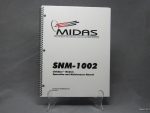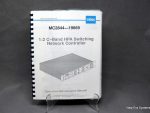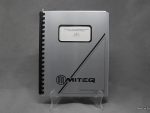Description
L3 Communications C-Band Up Converter Manual
This C-Band Up Converter Manual manual contains operating and maintenance instructions for converter/equalizer Models UC6M2-D5(70) and UC6M2-D5(140) manufactured by Satellite Networks.
PURPOSE AND FUNCTION
The Satellite Networks model UC6M2-D5 includes UC6M2-D5(70), or UC6M2-D5(140), is a RF frequency translation product, which provides downlink RF frequency translation functions in a single unit (1 3/4″) high. Its function is to up-convert an C-Band RF input frequency range of 3.40 to 4.20 GHz to the standard 70 MHz, or 140 MHz, output frequency.
CAPABILITIES
The UC6M2-D5 will address any frequency within the stated transmit bandwidth in 125 KHz stepped increments. The IF bandwidth is intended for operation within a 40 MHz bandwidth centered at 70 MHz (Fo +/- 20 MHz), for the 70 MHz model or within a 80 MHz bandwidth centered at 140 MHz (Fo +/- 40 MHz) for the 140 MHz model.
Due to its low phase noise and high frequency stability characteristics, the model UC6M2-D5 meets INTELSAT, EUTELSAT, Regional and DOMSAT requirements.
Both the model UC6M2-D5(70), and model UC6M2-D5(140), may be used as a stand alone up converter, as a single thread transmit unit satisfying the frequency translation component requirements for an earth station, or in redundancy with either Satellite Networks 1:1 protection switch option or in one for one “switchless” redundancy configuration.
DESCRIPTION
The UC6M2-D5 is completely self-contained, requiring only AC power to operate. The unit is housed in a standard size rack mountable chassis. All operational controls and indicators are located on the unit front panel. The on / off switch, line cord and all remote control and monitoring function accessibility are located on the rear panel. Local (front panel) controls are presented in an alpha-numeric menu driven format, via a “back lighted’ LCD display. Individual functions are accessed via front panel keypad switches.

